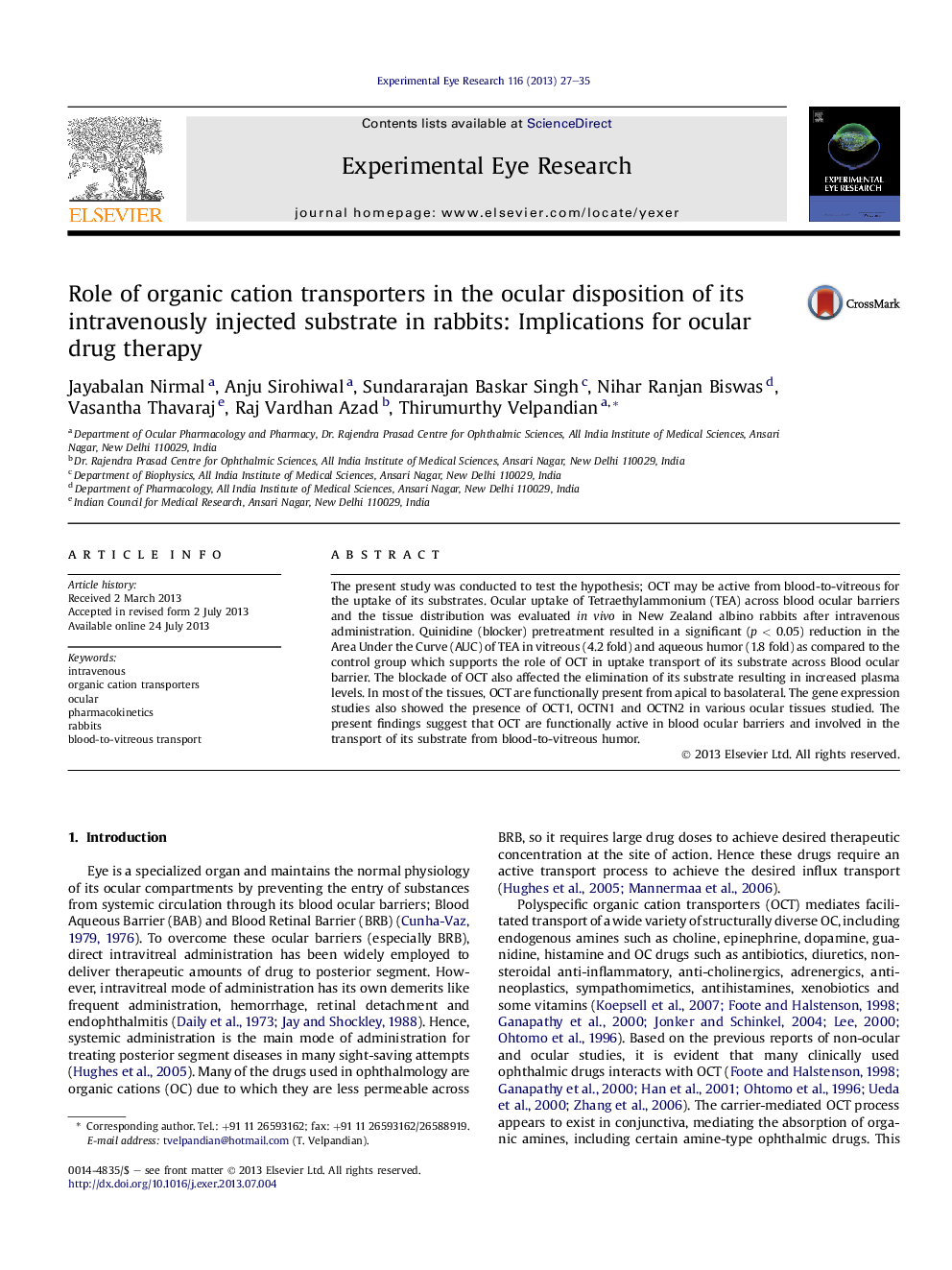| Article ID | Journal | Published Year | Pages | File Type |
|---|---|---|---|---|
| 6197189 | Experimental Eye Research | 2013 | 9 Pages |
â¢Organic cation transporters positioned from blood-to-vitreous in Blood Retinal Barrier.â¢Organic cation transporters functionally active in blood ocular barriers.â¢Organic cationic drugs given systemically may reach eye using organic cation transporters.
The present study was conducted to test the hypothesis; OCT may be active from blood-to-vitreous for the uptake of its substrates. Ocular uptake of Tetraethylammonium (TEA) across blood ocular barriers and the tissue distribution was evaluated in vivo in New Zealand albino rabbits after intravenous administration. Quinidine (blocker) pretreatment resulted in a significant (p < 0.05) reduction in the Area Under the Curve (AUC) of TEA in vitreous (4.2 fold) and aqueous humor (1.8 fold) as compared to the control group which supports the role of OCT in uptake transport of its substrate across Blood ocular barrier. The blockade of OCT also affected the elimination of its substrate resulting in increased plasma levels. In most of the tissues, OCT are functionally present from apical to basolateral. The gene expression studies also showed the presence of OCT1, OCTN1 and OCTN2 in various ocular tissues studied. The present findings suggest that OCT are functionally active in blood ocular barriers and involved in the transport of its substrate from blood-to-vitreous humor.
